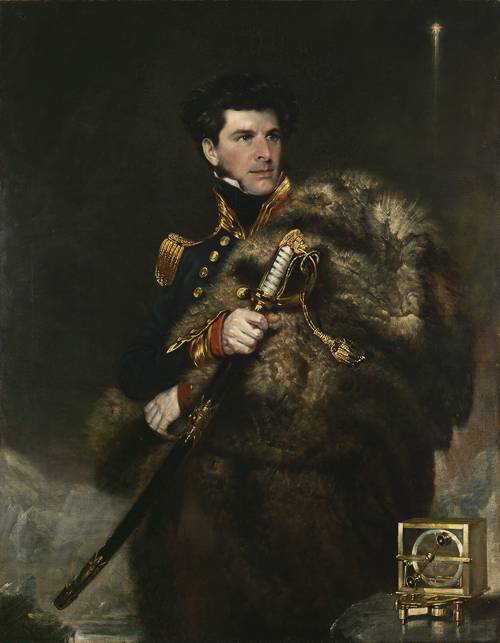
FAQ About James Clerk Ross

Who was James Clerk Ross?
James Clark Ross was a British naval officer and explorer who made significant contributions to polar exploration in the 19th century. He is best known for his expeditions to the Arctic and Antarctic regions, where he made several important geographical discoveries.

What are some of James Clark Ross's most notable achievements?
James Clark Ross is renowned for his discovery of the Ross Sea and the Victoria Land in Antarctica during his 1839-1843 expedition. He also located the magnetic north pole in 1831 during an Arctic voyage.

When did James Clark Ross discover the Ross Sea?
James Clark Ross discovered the Ross Sea during his Antarctic expedition, which took place from 1839 to 1843. This discovery was a key achievement in the exploration of Antarctica.

How did James Clark Ross contribute to the search for the Northwest Passage?
James Clark Ross participated in several Arctic expeditions that sought to find the Northwest Passage, a sea route through the Arctic Ocean to connect the Atlantic and Pacific Oceans. His Arctic expeditions, particularly his work in locating the magnetic north pole, contributed valuable knowledge to the ongoing search for this elusive passage.

What ships did James Clark Ross use during his Antarctic expedition?
During his Antarctic expedition, James Clark Ross commanded two ships, HMS Erebus and HMS Terror. These vessels were specifically equipped for polar exploration and played a crucial role in the success of the voyage.

What did James Clark Ross discover about the magnetic north pole?
James Clark Ross discovered the location of the magnetic north pole during an expedition in 1831. This was a significant milestone in the understanding of the Earth's magnetic fields and greatly assisted in navigation.

What impact did James Clark Ross's Antarctic expedition have on science?
James Clark Ross's Antarctic expedition led to several important scientific discoveries, including geological, zoological, and botanical findings. It significantly enhanced the understanding of Antarctic geography and ecosystems, and laid the groundwork for future scientific inquiry in the region.

Why is the Ross Sea named after James Clark Ross?
The Ross Sea was named after James Clark Ross in recognition of his pioneering Antarctic expedition. During his journey, he was the first to chart what is now known as the Ross Sea, marking one of the first large open-water areas explorers encountered in Antarctic waters.

Did James Clark Ross work alone on his expeditions?
James Clark Ross was part of a team during his voyages and worked alongside other notable figures, including his uncle, Sir John Ross, during their Arctic explorations. Collaboration with skilled navigators, scientists, and crew was essential to the success of these challenging expeditions.

What role did HMS Erebus and HMS Terror play in Ross's expeditions?
HMS Erebus and HMS Terror were the two ships commanded by James Clark Ross during his 1839-1843 Antarctic expedition. These specially reinforced ships were crucial in navigating the ice-covered waters and carried the crew and scientific equipment necessary to conduct their extensive research.

How did James Clark Ross's expeditions influence future polar exploration?
James Clark Ross's expeditions set a precedent for scientific exploration in polar regions. By mapping previously uncharted areas and enriching knowledge about polar environments, he inspired subsequent generations of explorers and researchers to further investigate and understand these remote areas.

What were some challenges faced by James Clark Ross in his Antarctic expedition?
James Clark Ross faced numerous challenges during his Antarctic expedition, including extreme cold, unpredictable weather, and harsh ice conditions. Navigating through thick pack ice and ensuring the crew's survival in such an isolated environment were significant hurdles.

How was James Clark Ross honored for his contributions to exploration?
James Clark Ross received several honors and accolades for his contributions to exploration and science. These include the naming of the Ross Sea and Ross Ice Shelf after him, recognizing his pioneering work in Antarctic exploration.

Did James Clark Ross discover Antarctica?
While James Clark Ross did not discover Antarctica, he conducted extensive investigations and succeeded in charting significant portions of the continent. His work in Antarctica was instrumental in advancing geographic and scientific knowledge of the region.

What was the significance of the Victoria Land discovery by James Clark Ross?
The discovery of Victoria Land by James Clark Ross during his Antarctic expedition was significant as it marked the identification of new land in Antarctica. This addition to the geographical maps expanded understanding of the continent's size and topography.

What did James Clark Ross's scientific team accomplish during the Antarctic expedition?
During the Antarctic expedition, James Clark Ross's scientific team conducted studies in zoology, botany, and geology. They collected valuable specimens and data that contributed to scientific knowledge about the Antarctic environment and its unique characteristics.

Were there any landmarks named after James Clark Ross?
Yes, in addition to the Ross Sea and Ross Ice Shelf, several geographical landmarks are named after James Clark Ross, commemorating his influential role in polar exploration.

What was a major outcome of Ross's discovery of the magnetic north pole?
The discovery of the magnetic north pole by James Clark Ross had profound implications for navigation and the understanding of Earth's magnetism. This achievement enabled better compass readings and informed future studies of magnetic phenomena.

How did James Clark Ross’s exploration differ from earlier voyages?
James Clark Ross's exploration was characterized by its scientific approach, utilizing the latest technology of the time to conduct comprehensive studies. Unlike earlier voyages that primarily focused on finding new trade routes or territories, Ross aimed to gain a deeper understanding of polar environments, which contributed significantly to the body of scientific knowledge.
